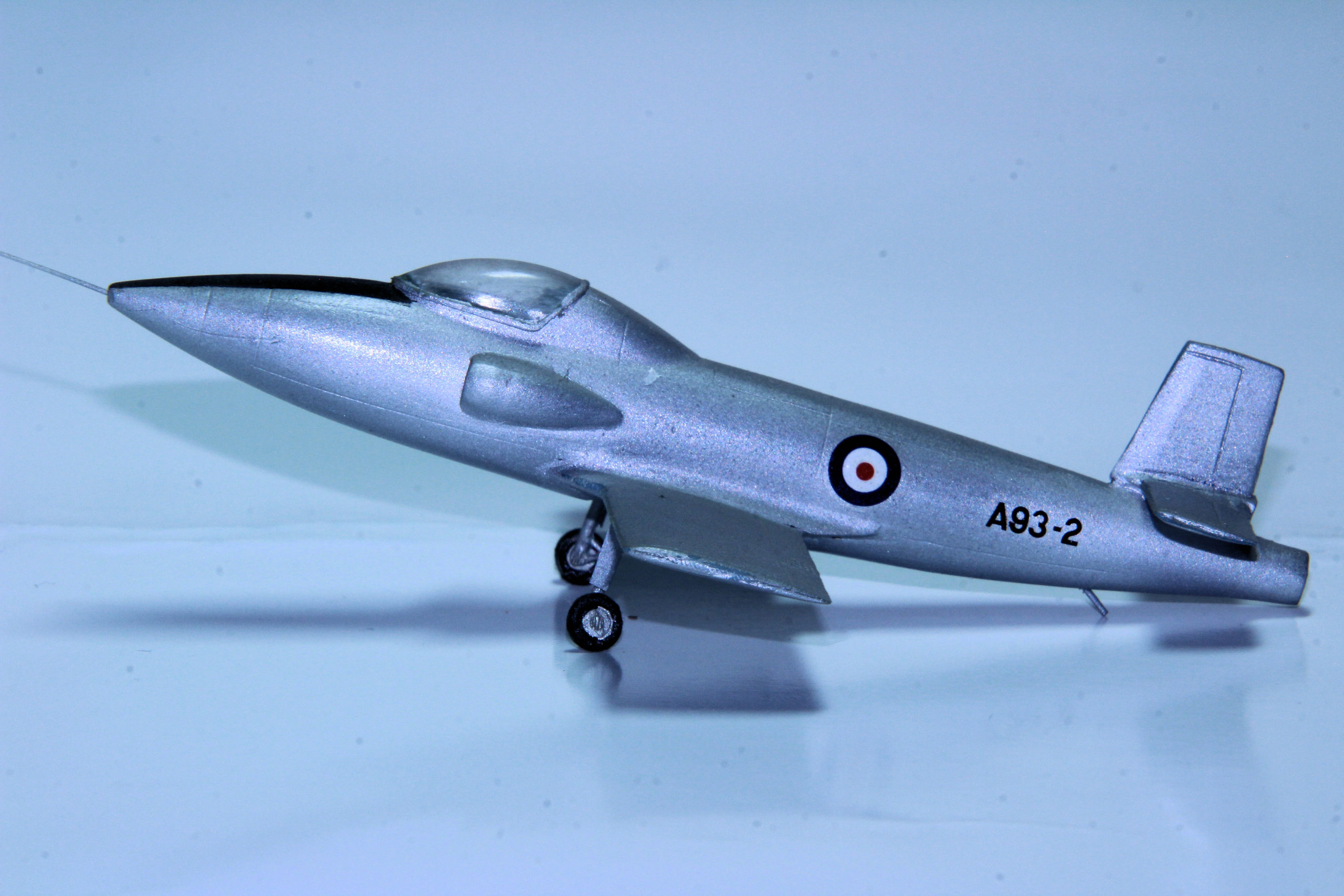GAF Pika
Development of the Jindivik began in 1948, with the first flight of the manned derivative in 1950 (known as the Pika) and the first flight of the unmanned version (Jindivik) in August two years later.
The Pika first flew in October 1950 from Woomera airfield. Known initially as Project ‘C’, two Pikas were built and logged over one hundred flying hours in testing. To date the only Australian designed and built manned jet aircraft, only one survived (A93-2 in the RAAF Museum in Point Cook) which ended its flying career in June 1954.
The Pika was powered by a single Armstrong Siddeley Adder turbojet, and had a maximum speed of over 755 km/h. Differing from the Jindivik in its engine intakes, undercarriage and cockpit, the addition of the pilot reduced the fuel load available for the aircraft, reducing its endurance to around 30 minutes. In addition, the aircraft could be both flown by the pilot or a ground station and provided excellent training for operators of the subsequent Jindivik with the added safety net of a pilot in the cockpit. Although the Pika suffered several minor accidents, the trials were a success, and among other results, proved that the Jindivik design did not require a rudder, saving cost and weight.
| DESCRIPTION | Single-seat research aircraft. |
| POWER PLANT | One 476 kg (1050 lb) thrust Armstrong Siddeley Adder ASA1. |
| DIMENSIONS | |
| Span | 5.79 m (19 ft); |
| Length | 7.49 m (24 ft 7 in); |
| Height | 1.92 m (6 ft 3.5 in). |
| WEIGHT | |
| Empty | 1043 kg (2300 lb); |
| loaded | 1315 kg (2900 lb). |
| PERFORMANCE | |
| Max speed | 756 km/h (408 kt); |
| Rate of climb | 1271 m (4170 ft)/min; |
| Ceiling | 32,000 ft (9754 m) |
Historical photographs of the Pika can be found here.
Photographs of the Pika at the RAAF museum can be found here
GAF Pika A83-2 1/72 Scale Model by High Planes Models

GAF Pika A83-2 1/72 Scale Model by High Planes Models 
GAF Pika A83-2 1/72 Scale Model by High Planes Models 
GAF Pika A83-2 1/72 Scale Model by High Planes Models 
GAF Pika A83-2 1/72 Scale Model by High Planes Models 
GAF Pika A83-2 1/72 Scale Model by High Planes Models 
GAF Pika A83-2 1/72 Scale Model by High Planes Models 
GAF Pika A83-2 1/72 Scale Model by High Planes Models 
GAF Pika A83-2 1/72 Scale Model by High Planes Models
